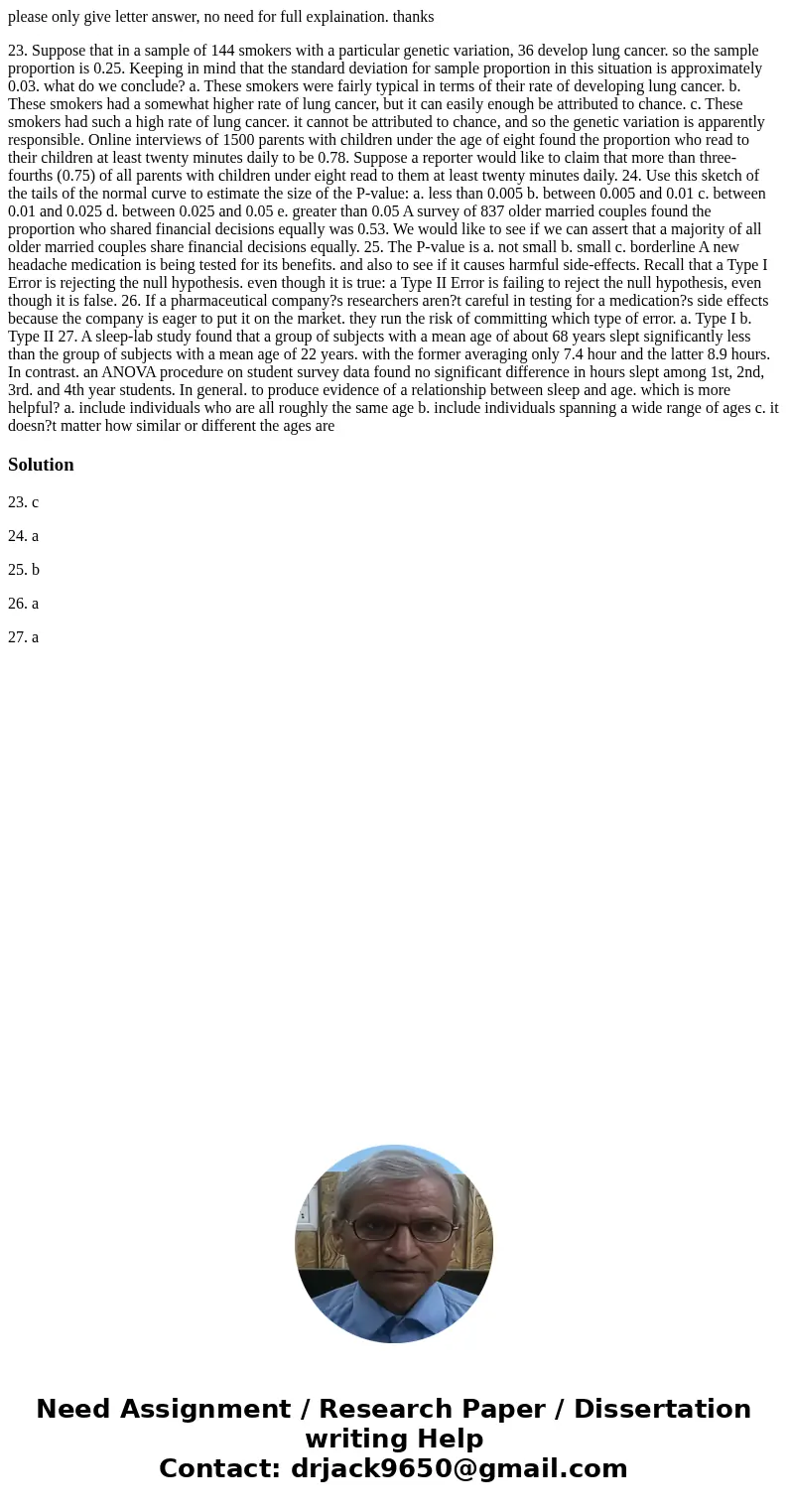please only give letter answer no need for full explaination
please only give letter answer, no need for full explaination. thanks
23. Suppose that in a sample of 144 smokers with a particular genetic variation, 36 develop lung cancer. so the sample proportion is 0.25. Keeping in mind that the standard deviation for sample proportion in this situation is approximately 0.03. what do we conclude? a. These smokers were fairly typical in terms of their rate of developing lung cancer. b. These smokers had a somewhat higher rate of lung cancer, but it can easily enough be attributed to chance. c. These smokers had such a high rate of lung cancer. it cannot be attributed to chance, and so the genetic variation is apparently responsible. Online interviews of 1500 parents with children under the age of eight found the proportion who read to their children at least twenty minutes daily to be 0.78. Suppose a reporter would like to claim that more than three-fourths (0.75) of all parents with children under eight read to them at least twenty minutes daily. 24. Use this sketch of the tails of the normal curve to estimate the size of the P-value: a. less than 0.005 b. between 0.005 and 0.01 c. between 0.01 and 0.025 d. between 0.025 and 0.05 e. greater than 0.05 A survey of 837 older married couples found the proportion who shared financial decisions equally was 0.53. We would like to see if we can assert that a majority of all older married couples share financial decisions equally. 25. The P-value is a. not small b. small c. borderline A new headache medication is being tested for its benefits. and also to see if it causes harmful side-effects. Recall that a Type I Error is rejecting the null hypothesis. even though it is true: a Type II Error is failing to reject the null hypothesis, even though it is false. 26. If a pharmaceutical company?s researchers aren?t careful in testing for a medication?s side effects because the company is eager to put it on the market. they run the risk of committing which type of error. a. Type I b. Type II 27. A sleep-lab study found that a group of subjects with a mean age of about 68 years slept significantly less than the group of subjects with a mean age of 22 years. with the former averaging only 7.4 hour and the latter 8.9 hours. In contrast. an ANOVA procedure on student survey data found no significant difference in hours slept among 1st, 2nd, 3rd. and 4th year students. In general. to produce evidence of a relationship between sleep and age. which is more helpful? a. include individuals who are all roughly the same age b. include individuals spanning a wide range of ages c. it doesn?t matter how similar or different the ages areSolution
23. c
24. a
25. b
26. a
27. a

 Homework Sourse
Homework Sourse